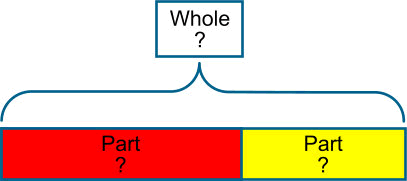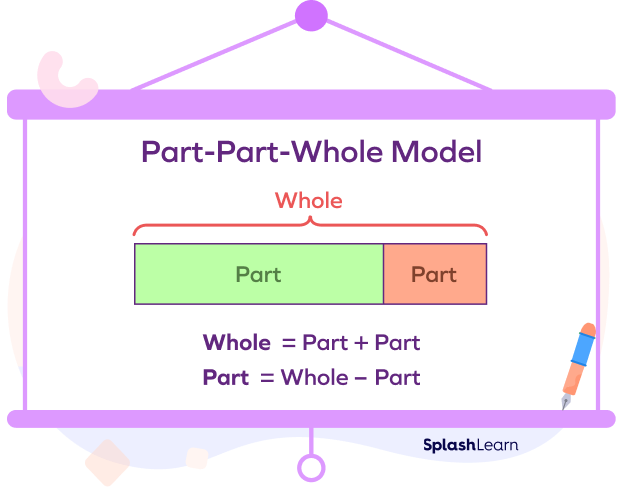Creative ways to teach fractions with bar model drawing techniques
Wiki Article
Exploring Bar Design Drawing Techniques: A Comprehensive Overview to Visualizing Math Concepts
Bar model attracting techniques act as a valuable source for both educators and trainees in visualizing mathematical principles. These models simplify complex mathematical partnerships, aiding in the comprehension of enhancement, multiplication, subtraction, and division. This guide details effective methods for implementing bar models, cultivating active interaction and real-world links. As readers discover the sensible applications and teaching tips, they will certainly uncover exactly how these methods can change their method to mathematics.Comprehending the Essentials of Bar Model Drawing
Bar model drawing functions as an effective aesthetic device in mathematics, assisting in the understanding of mathematical connections and analytical strategies. This strategy entails standing for numbers and their partnerships via rectangular bars, making it easier to imagine operations such as enhancement, subtraction, department, and multiplication. Each bar's size represents a specific worth, permitting students to compare quantities and understand proportions plainly.To develop a bar design, one starts by identifying the trouble's crucial elements, frequently breaking it down right into parts that can be aesthetically stood for. As an example, in a straightforward addition trouble, 2 bars can be drawn, with their sizes standing for the addends. The consolidated length shows the sum. Additionally, bar versions can be adapted for a lot more complicated problems, consisting of ratios and portions, by changing the bars accordingly. Understanding these fundamentals lays a strong structure for efficient analytic and much deeper mathematical understanding.
Benefits of Utilizing Bar Models in Mathematics
Utilizing bar designs in mathematics uses various benefits that enhance understanding and understanding. These aesthetic depictions aid students in realizing complicated principles by breaking them down right into workable parts. Bar designs give a clear framework for showing relationships between numbers, making abstract concepts extra concrete. They promote a much deeper understanding of mathematical procedures and facilitate analytical by permitting learners to imagine the data they are functioning with.Bar models support the advancement of vital assuming abilities, as students must analyze and translate the aesthetic details to attract conclusions. This method motivates energetic engagement with the material, strengthening retention and proficiency of mathematical concepts. By cultivating a solid structure in aesthetic literacy, bar versions equip students to approach different mathematical difficulties with confidence. Generally, the integration of bar models right into mathematics education verifies helpful in growing both understanding and analytical capabilities among trainees.
Applying Bar Models to Addition and Subtraction
Bar versions offer as a reliable device for aesthetically standing for enhancement and subtraction problems. By showing the connection between numbers, they enhance understanding and facilitate problem-solving. On top of that, real-life applications of these versions can assist learners realize mathematical principles in functional contexts.Standing For Addition Visually
Aesthetic aids can substantially improve their understanding of these operations when students run into addition and reduction troubles. Bar models offer as effective devices for representing enhancement. By separating a rectangular shape into sectors that correspond to the numbers involved, pupils can imagine the partnership in between the quantities. If a pupil needs to add 3 and 5, they can develop a bar divided right into two sections: one area standing for 3 and the various other standing for 5. This clear depiction not only streamlines the enhancement process yet likewise enhances the concept of integrating quantities. As trainees adjust these aesthetic aids, they create a deeper comprehension of addition, bring about enhanced analytical abilities and greater self-confidence in their mathematical capacities.
Subtraction With Bar Models
Subtraction is frequently viewed as an extra complex operation than addition, bar models can properly clarify this procedure for pupils. By aesthetically representing the amounts included, pupils can much better comprehend exactly how numbers connect to one another. In a bar design for reduction, one bar represents the total amount, while one more indicates the quantity being subtracted. This visual difference aids pupils realize the principle of "eliminating." If a bar shows 10 units, and another bar representing 4 units is eliminated, pupils can quickly see that 6 units remain. This technique not only cultivates understanding of subtraction yet additionally help in creating analytical skills, enabling pupils to picture their mathematical reasoning and enhance their total understanding of mathematical ideas.Real-Life Application Examples
Comprehending subtraction via bar versions lays a structure for applying these techniques in real-life scenarios. In various contexts, such as budgeting or purchasing, individuals can visualize just how much cash remains after costs. If an individual has $50 and invests $20, a bar version can stand for the complete amount and the invested part, showing that $30 is left. Additionally, moms and dads can utilize bar versions to help kids recognize the amount of more items need to be included in finish a collection, such as having three apples and requiring 5. This graph simplifies complicated problems, facilitating comprehension and retention. Eventually, bar designs serve as effective devices in everyday decision-making, improving mathematical understanding in sensible circumstances.Visualizing Reproduction and Division With Bar Designs
In exploring the application of bar models for reproduction and division, it is important to understand their foundational principles. Constructing reproduction versions moved here permits learners to imagine relationships between numbers, while reliable division methods can be illustrated through these visual aids. This method boosts understanding and problem-solving skills in mathematics.Recognizing Bar Versions
Bar versions serve as a powerful visual device for illustrating the concepts of reproduction and department. They allow learners to stand for mathematical relationships in an organized layout, assisting in a deeper understanding of these procedures. In reproduction, bar versions display teams of equivalent size, enabling individuals to imagine the total amount when combining these groups. Conversely, in department, bar designs help show exactly how a total amount is separated into smaller, equivalent parts, clearing up the concept of partitioning. By employing these visual help, trainees can grasp the underlying concepts of reproduction and department better. This method not just boosts understanding however additionally supports analytic abilities, making bar versions an invaluable possession in mathematical education and learning.Creating Reproduction Designs
Creating multiplication designs utilizing bar diagrams supplies a clear approach for imagining the procedure of reproduction. These models make it possible for students to represent multiplication as groups of equivalent components, making abstract ideas a lot more concrete. To highlight (3 times 4), a pupil can attract one bar divided right into three equal sectors, each representing 4 units. Additionally, producing a second bar with the exact same length enhances the understanding of repeated enhancement, as each segment represents one group. This aesthetic representation not only help in comprehending reproduction however additionally improves analytic skills. By employing bar versions, students can better understand partnerships between numbers and establish a durable foundation for more intricate mathematical concepts, causing raised self-confidence in their capabilities.Envisioning Division Strategies

Solving Word Issues Using Bar Version Techniques

As an example, in a problem involving addition and reduction, pupils can attract separate bars for every amount and after that adjust them to locate the solution. This procedure not just clarifies the problem but likewise fosters a much deeper theoretical understanding. Bar models can be adjusted for various types of word troubles, making them functional across various mathematical subjects. Eventually, utilizing bar versions can considerably improve students' analytic skills by providing a clear aesthetic pathway to reach the correct response.
Integrating Bar Models in Various Mathematics Topics
Bar models can be flawlessly integrated right into different math subjects, enhancing trainees' understanding of principles past fundamental math. In algebra, these visual devices aid in standing for inequalities and equations, enabling students to visualize relationships in between variables. When tackling geometry, bar versions can illustrate the homes of shapes and spatial thinking, helping trainees comprehend concepts like location and border efficiently. In stats, bar versions help with the analysis of information sets, allowing students to compare amounts and recognize patterns visually. Additionally, incorporating bar versions within dimension subjects aids in recognizing units and conversions by supplying a tangible representation of quantities. By utilizing bar designs throughout different mathematical areas, educators can foster a much deeper understanding of complex concepts, consequently enhancing analytic abilities and advertising critical reasoning (bar model drawing techniques). This flexibility demonstrates the utility of bar designs as a foundational tool for pupils in their mathematical tripTips for Training Bar Models Efficiently
Incorporating bar designs right into training techniques calls for thoughtful approaches to optimize their efficiency. Educators needs to start by presenting bar designs with easy, relatable examples that trainees can easily grasp. This aids to build self-confidence and knowledge with the principle. Progressively boosting the intricacy of troubles permits students to use their abilities considerably. Additionally, teachers should encourage pupils to produce their own bar designs, promoting energetic interaction and ownership of their understanding.my company
Integrating collective activities can additionally enhance understanding, as pupils review and address issues in groups. Continual comments is necessary; teachers should give useful commentary on pupils' bar design representations to lead enhancement. Finally, attaching bar designs to real-life situations enhances their significance, aiding trainees see the practical applications of their mathematical skills. By applying these methods, instructors can properly harness the power of bar designs in their maths guideline.
Regularly Asked Questions
Can Disallow Versions Be Used in Other Topics Besides Math?
Bar designs can indeed be utilized in additional info numerous subjects beyond mathematics. They properly show concepts in scientific research, social studies, and language arts, helping to aesthetically stand for partnerships, processes, and ideas for boosted understanding across disciplines.What Age Team Is Finest Suited for Knowing Bar Versions?
Bar versions are best matched for kids ages 7 to 12, as they create concrete reasoning abilities during this duration (bar model drawing techniques). At this age, students can efficiently comprehend abstract principles with aesthetic depiction and analytical methodsExist Digital Devices for Creating Bar Versions?

Just How Can I Evaluate Student Understanding of Bar Versions?
Assessing student understanding of bar designs can involve tests, observational analyses, and team discussions. Educators may additionally assess students' finished models and their capability to explain their thinking, guaranteeing a comprehensive analysis of comprehension.What Prevail Blunders When Using Bar Designs?
Common errors when making use of bar designs consist of misrepresenting amounts, falling short to accurately classify bars, confusing addition and reduction, neglecting to make use of consistent scales, and ignoring the importance of clear visual splitting up in between different aspects.In enhancement, bar designs can be adjusted for more complicated issues, consisting of fractions and proportions, by adjusting the bars accordingly. Reduction is usually perceived as a much more intricate procedure than enhancement, bar models can efficiently clarify this procedure for trainees. In a bar version for subtraction, one bar represents the total amount, while one more suggests the quantity being subtracted. If a bar shows 10 systems, and one more bar representing 4 devices is gotten rid of, pupils can easily see that 6 units stay. When separating a total amount right into equivalent groups, trainees can draw a long bar to represent the entire and after that section it right into smaller bars that suggest each team.
Report this wiki page